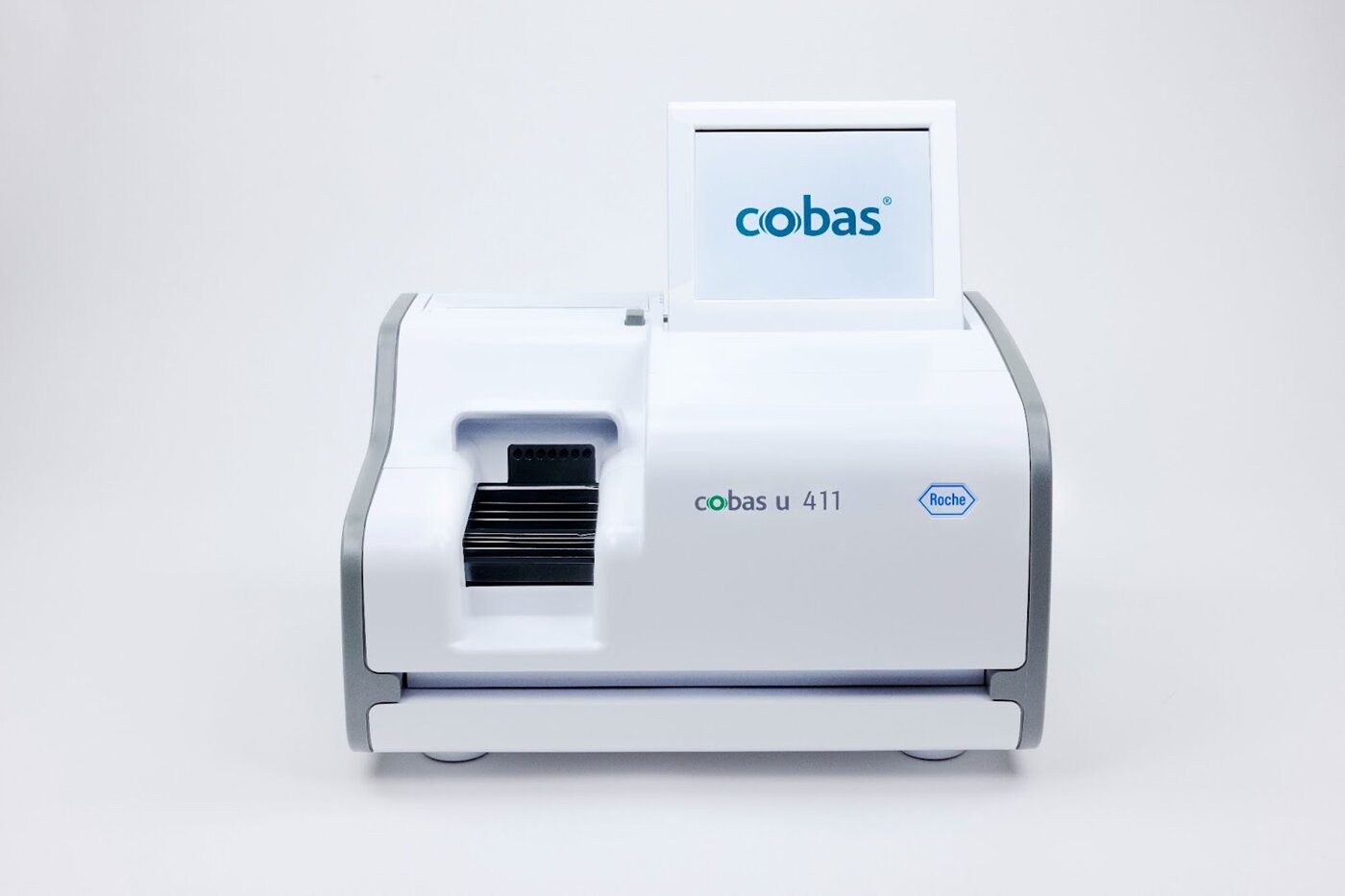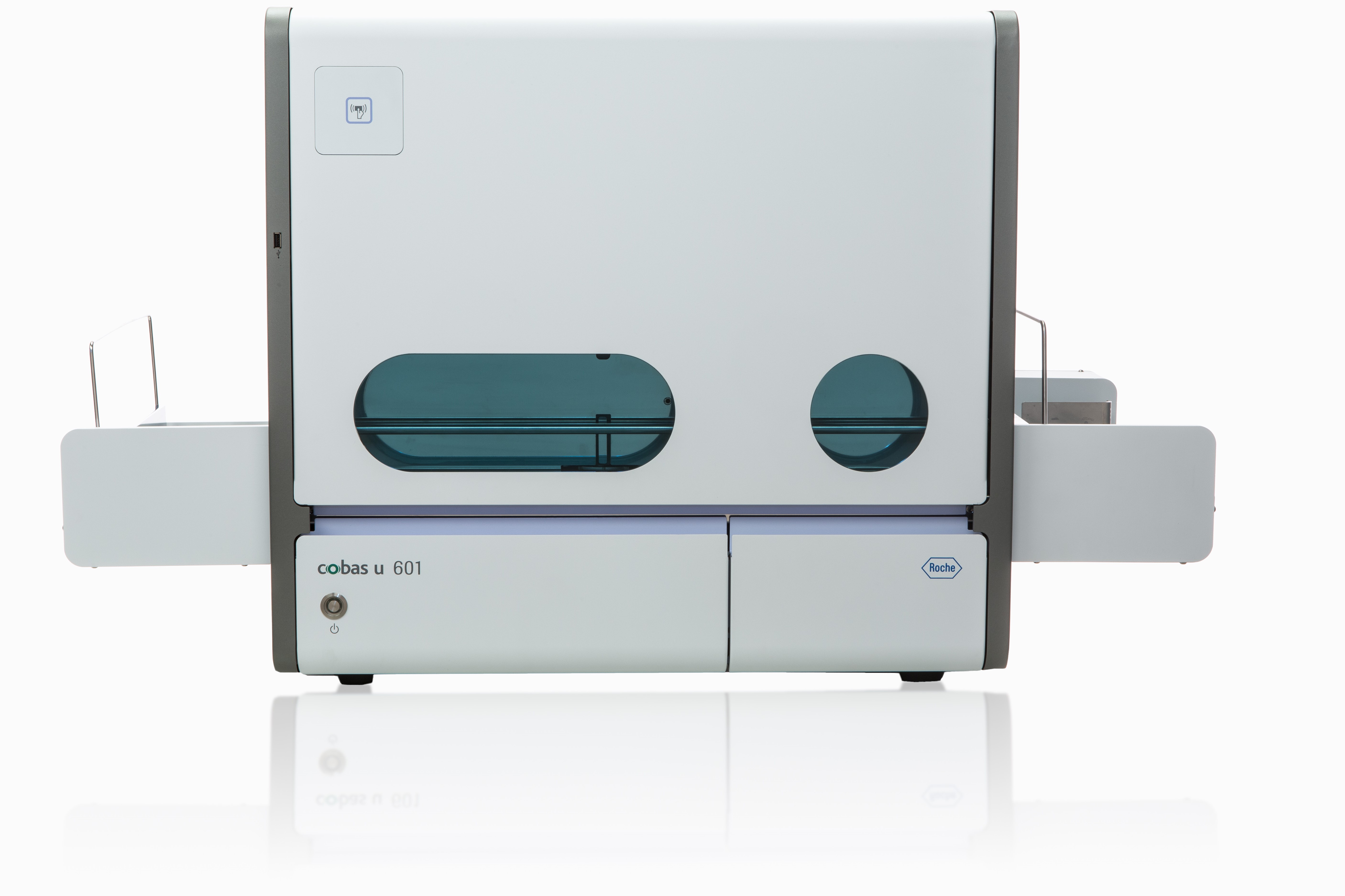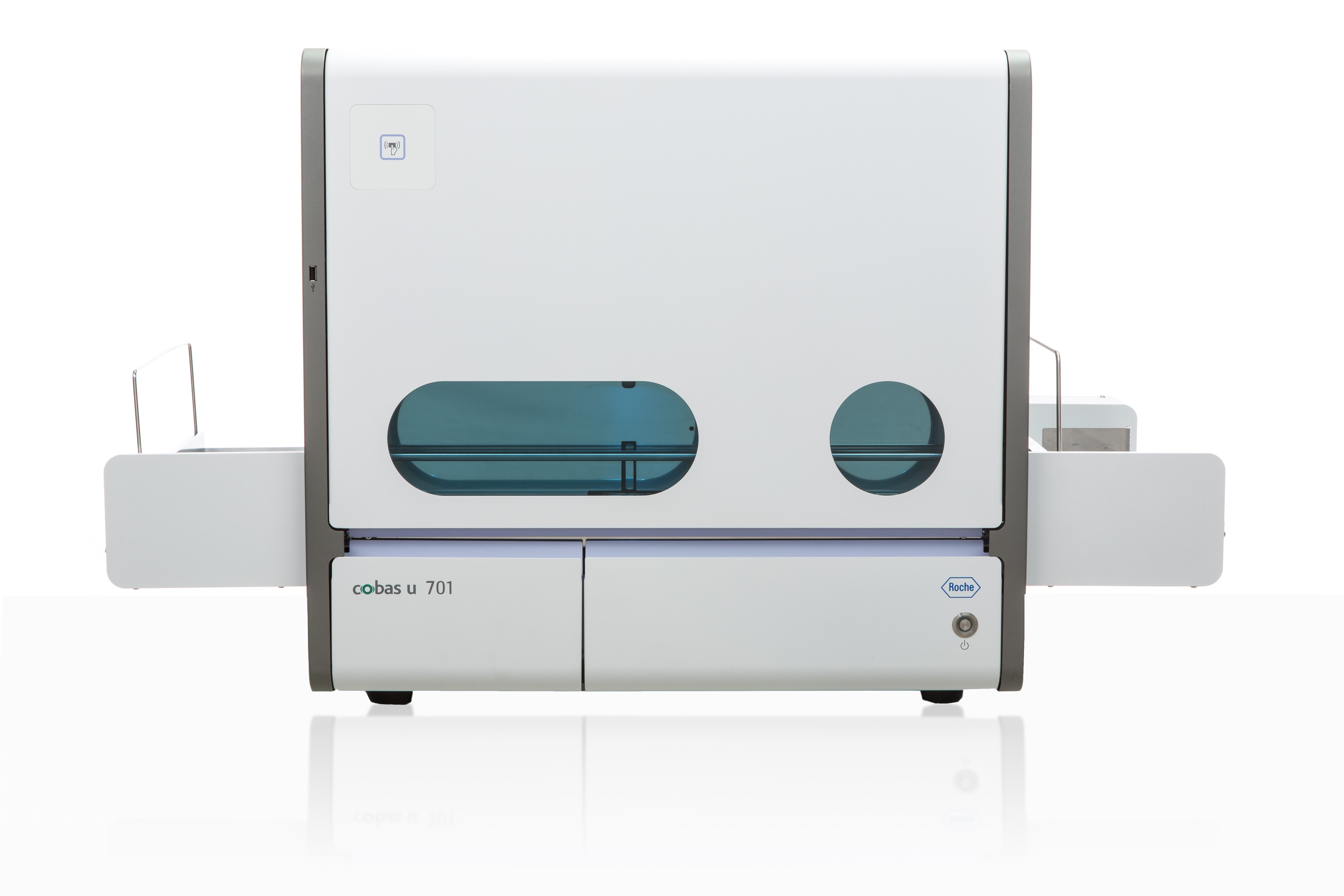For localized information and support, would you like to switch to your country-specific website for {0}?
Urinalysis solutions that automate and optimize workflows for reliable testing
An integrated approach to urinalysis lab testing that empowers healthcare professionals and their patients
Roche urinalysis core lab solutions provide an integrated approach to urinalysis testing, standardizing and optimizing laboratory workflows to provide accurate, reliable, and fast results for patients.
Our automated analyzers minimize ‘hands-on’ time and manual intervention for laboratory staff:
- The cobas® u 411 urine analyzer is a semi-automated benchtop instrument that optimizes performance and data flow management.
- cobas® u 701 microscopy analyzer is the gold standard in urine sediment analysis and automates all manual steps minimizing operator intervention and increasing lab efficiency.
- cobas® u 601 urine analyzer uses proven quality strips (designed with unique Combur-Test® net-sealing technology) and new generation of photometer technology, providing reliable and confident results.
- Due to its modular design, the stand-alone cobas u 601 urine analyzer can be upgraded on-site with the cobas u 701 microscopy analyzer to a urine work area - cobas® 6500 urine analyzer series - one platform with automated sample transportation through the entire system.
With navify® Lab Operations, seamlessly unify your urinalysis lab by consolidating microscopy images into one central platform to perform validation and assessment.
Streamlined solutions to optimize urinalysis testing
With the integrated modular platform design of our analyzers you can build a solution to suit your lab, and with solutions for low to high throughput labs, we have the right solution for every workload.
Urinalysis core lab solutions accelerate testing and streamline your urinalysis lab by consolidating microscopy images from multiple systems across the lab onto a central navify® lab operations platform. This helps you to maintain oversight of result validation and optimize workflows.
Featured products
Benefits of urinalysis core lab solutions from Roche
Proven rapid performance and high-quality urinalysis
- Confident, high-quality results for more than 50 years with Combur-Test® test strip technology
- Minimize operator intervention for easy handling and simplified workflows with automated urine strip testing and sample transport
- Improve turnaround times for urine sediment testing with gold standard manual microscopy procedures automated in the cobas® u 701
Easy handling and integrated connectivity
- Consolidates the urine work area into a single system and increase the productivity and efficiency of urinalysis labs through integrated connectivity of the cobas® u 601 and 701 with cobas® 6500
- Optimize workflows and result validation through one overarching central workstation with navify® Lab Operations
- Connect the cobas® 6500 to cobas® connection modules to enable full laboratory automation and provide a unified solution that maximizes the consolidation of testing
Standardized technology provides comparable results
- Standardize and compare results across all testing environments with Combur-Test® test strip technology
- Consolidate results from all manual and automated systems, streamlining the patient care pathway
- Automate test strip analysis and standardize manual steps to help reduce operator intervention and improve turnaround times
References
- cobas u 411 system, Operators manual version 3.0_Software version 3.2 and 3.3
- cobas u 701 microscopy analyzer, Operators manual version 2.5_Software version 2.3
- cobas u 601 urine analyzer, Operators manual version 2.6_Software version 2.2 and 2.3
- cobas 6500 urine analyzer series, Operators manual version 2.5_Software version 2.3
- Delanghe, J., Speeckaert, M. (2014). Preanalytical requirements of urinalysis. Biochemia Medica 24(1),89- 104, 894




